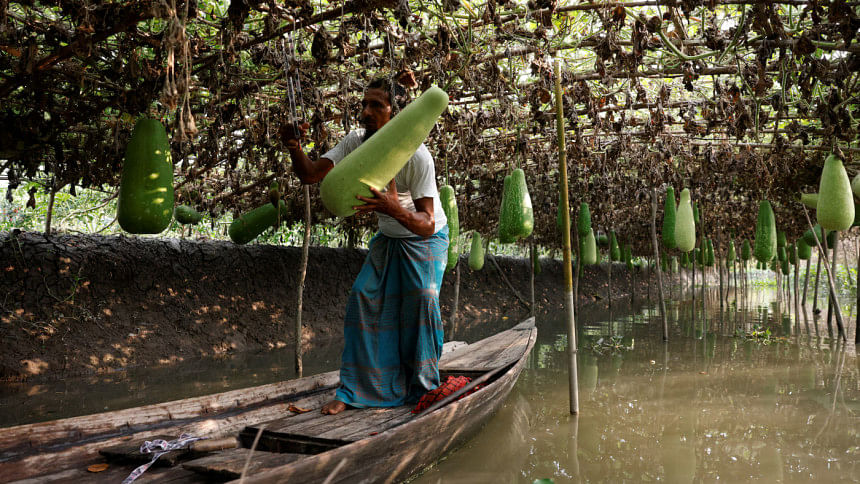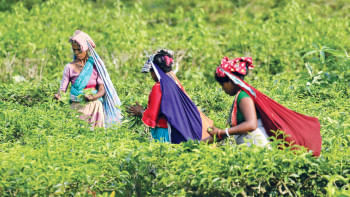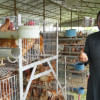How vertical farming can ensure Bangladesh’s food security

Despite being an agricultural country, Bangladesh is experiencing a steady decline in agricultural production. This is due to the continuous conversion of agricultural land to non-agricultural land. Various unavoidable as well as avoidable factors—such as population growth, urban development, industrial expansion, and infrastructure projects—contribute to this degradation of the total cultivable land area. If this trend continues, ensuring future food security will become increasingly challenging. Here, vertical farming offers a sustainable and space-efficient solution that deserves urgent attention and investment.
According to information disclosed at a seminar jointly organised by the Consumer Association of Bangladesh (CAB) and Friends in Village Development Bangladesh (FVDB), in collaboration with the Bangladesh Food Safety Authority, future food security is a significant concern, as between 2,500 and 3,000 hectares of arable land are being transformed each year for non-agricultural uses. Over the past few decades, Bangladesh's arable land has steadily decreased, according to the Food and Agriculture Organization (FAO). The overall area of arable land fell by around 30 percent between 1980 and 2020, from almost 10 million hectares to about 7 million hectares. In addition, the country loses roughly 8,750 hectares of agricultural land every year due to infrastructure development and urbanisation, according to the Bangladesh Bureau of Statistics (BBS).
If this trend continues, what will be the consequences? To answer this, different reports present alarming findings. Experts predict that if nothing is done now, our country may be left with very little arable land in 63 years, which is undoubtedly a dire situation for a country of 17 crore people who still rely largely on agriculture. The Director General of the Department of Environment (DoE) warned at a workshop that if the current rate of farmland loss continues, there will be no cultivable land left in the country by 2050. As a result, the nation would become more reliant on food imports, leaving it vulnerable to fluctuations in international markets and endangering the food security of its growing population.
Before it is too late, we must consider the potential of vertical farming, which many countries around the world have already adopted on a large scale. Europe is predicted to be the region with the highest rate of growth in vertical farming in the coming years, with nations like Germany, the Netherlands, and the UK implementing policy-driven incentives, carbon regulations, and renewable energy integration to promote vertical farming, as suggested in another report from "Research and Markets."
So, what is vertical farming, and how does it work? Crops are produced in stacked layers using the modern agricultural practice known as "vertical farming", often in controlled spaces like buildings or shipping containers. Vertical farming maximises output in constrained space by building upwards, as opposed to traditional farming, which spreads horizontally across fields. Technologies used in these farms include hydroponics, where plants are grown in nutrient-rich water instead of soil, LED lighting that simulates sunlight, and automated systems that monitor plant health and supply precisely the right amount of water and nutrients.
In its most basic form, vertical farming involves the use of shelf systems in which plants are grown in layers of trays. Towers, A-frames, or entire building interiors with advanced climate management are examples of more complex systems. The indoor environment is meticulously controlled, with optimal levels of light, humidity, temperature, and air quality maintained. In the absence of soil, plants are fed with water-based solutions that contain all the nutrients they need. Regardless of the weather outside, production may continue year-round in this controlled environment, which also eliminates the need for pesticides.
Vertical farming could be a game changer for Bangladesh, as the country is losing farmland at a rapid rate. With a population of around 170 million and a loss of arable land (from 9.4 million hectares in 1980 to 7.7 million in 2020, according to FAO data), feeding everyone is becoming increasingly difficult. Vertical farms could emerge in places like Dhaka, turning rooftops or unused spaces into food production facilities. They would reduce reliance on imports, which increased when floods in 2024 damaged 1.1 million tonnes of rice (USDA, 2023). Furthermore, they use 70-95 percent less water.
The catch? Lights, systems, and energy are expensive to install. However, the US's billion-dollar industry and Japan's more than 200 vertical farms demonstrate that it is achievable with adequate investment. Small-scale trials, commercial collaborations, and government subsidies could catalyse adoption in Bangladesh. By combining creativity and necessity, vertical farming could secure our food future, if we act today.
While the agricultural sector is being revolutionised in developed and most developing countries with modern technologies, it is high time to match the pace through game-changing innovations. The Department of Agricultural Extension (DAE) has a vital role to play in this regard. According to research conducted by students from the Faculty of Agriculture at Hajee Mohammad Danesh Science & Technology University (HSTU) in March, almost 89 percent of farmers over the age of 25 have no knowledge of artificial intelligence or modern appliances used in agriculture. Therefore, short-, medium-, and long-term extension programme planning is necessary to increase technological literacy among farmers.
Need-based training—such as literacy programmes on modern farm appliances, effective pest management, and maintaining soil fertility using organic additives—can help farmers prevent the degradation of cultivable land. In addition, long-term strategies should be implemented to prevent arable land from being taken over for extravagant economic projects.
Every year, a considerable amount of land is degraded due to the use of inappropriate chemicals, pesticides, and harmful fertilisers; therefore, the promotion of biofertilisers should be included in unit-level and block-level extension agendas. Coordination between government organisations is strongly recommended to raise awareness about the degradation of arable land and the potential risks of landlessness and declining food production.
Abdur Rahman Al-Mamun is a student at Hajee Mohammad Danesh Science & Technology University, Dinajpur. He can be reached at [email protected].
Views expressed in this article are the author's own.
Follow The Daily Star Opinion on Facebook for the latest opinions, commentaries and analyses by experts and professionals. To contribute your article or letter to The Daily Star Opinion, see our guidelines for submission.

 For all latest news, follow The Daily Star's Google News channel.
For all latest news, follow The Daily Star's Google News channel. 








Comments